A visit by a George C. Marshall Foundation intern
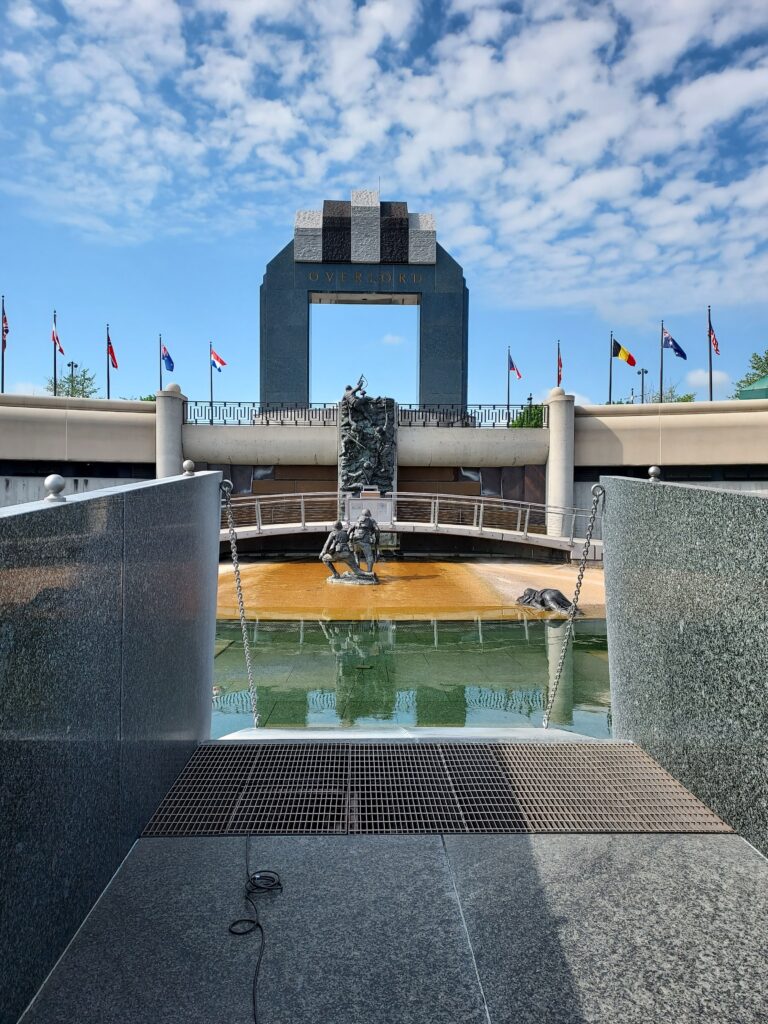
The National D-Day Memorial in Bedford, VA.
As an intern with the Marshall Foundation, I was presented with the opportunity to attend the annual D-Day Memorial ceremony that is hosted by the National D-Day Memorial in Bedford, Virginia. It was an inspiring, yet solemn, event and I am glad I was able to attend.
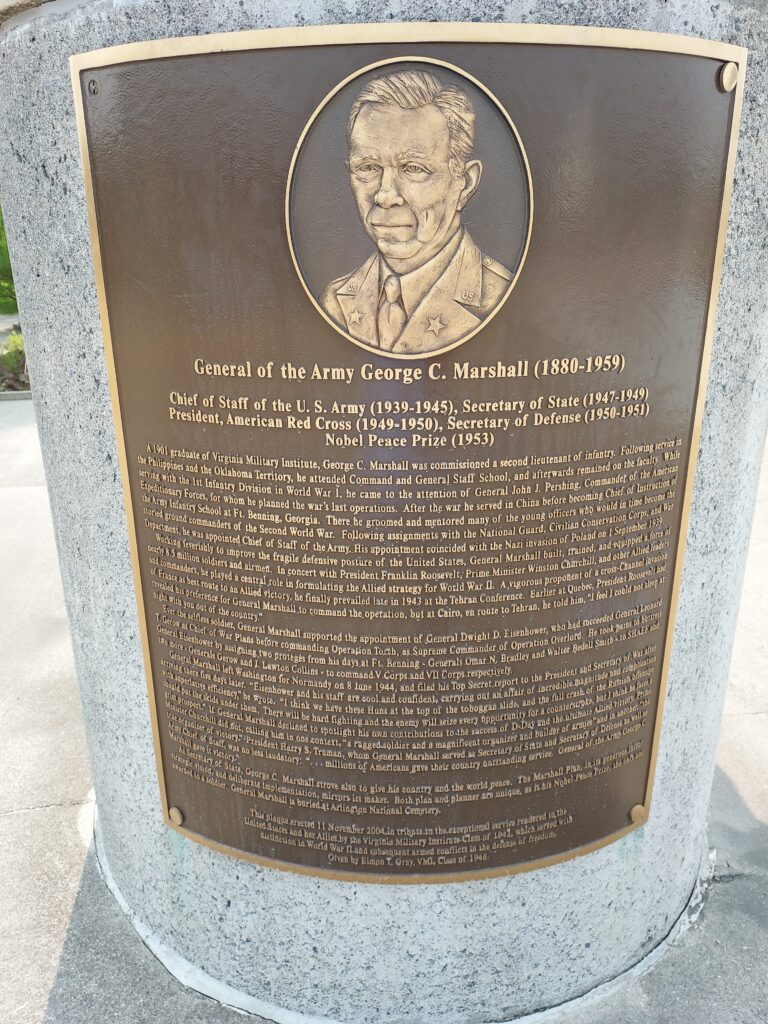
Gen. George C. Marshall plaque
We arrived early in the day, about an hour before the ceremony began. Clare, another intern at the Marshall Foundation, and I walked around the memorial, examining the plaques that honored the leaders and planners of the invasion. There were also plaques commemorating each unit that participated in the invasion. It is overwhelming to understand the amount of planning and resources that went into the invasion.
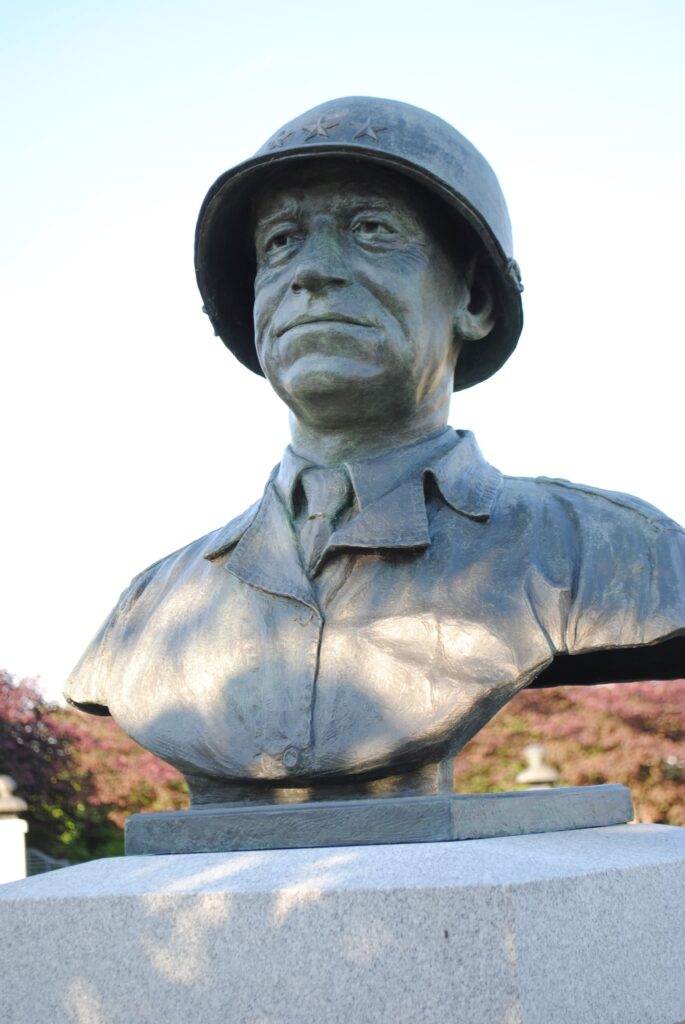
Gen. Omar Bradley
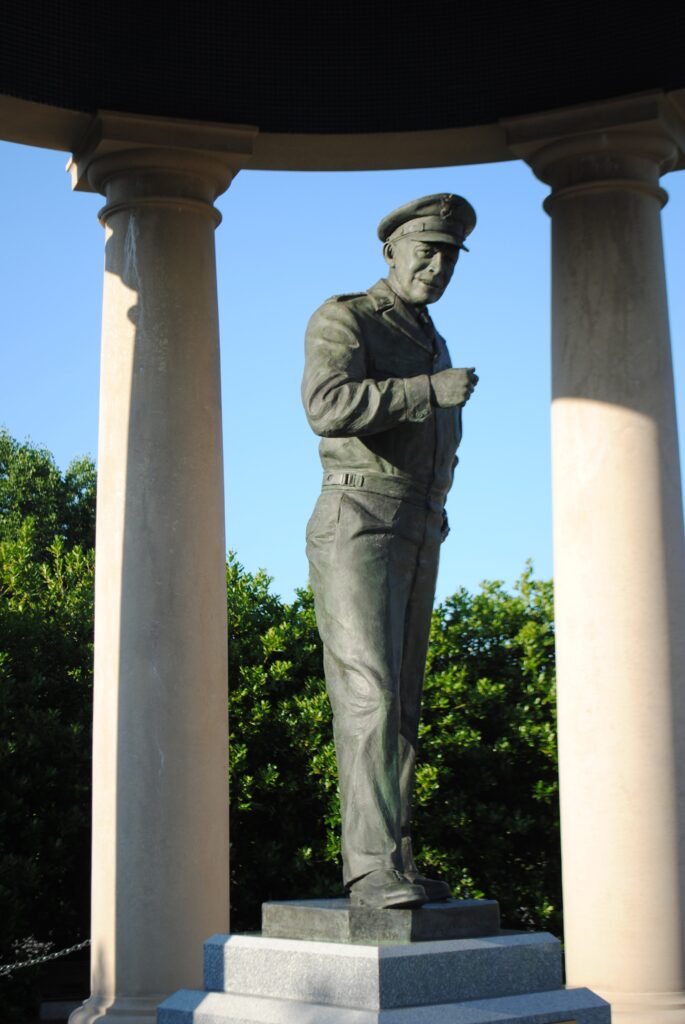
Gen. Dwight D. Eisenhower
The best part of the memorial was the recreation of the landings at Omaha Beach. There was a cement landing craft, and statues of soldiers running off the craft and to the beach. Czech hedgehogs, or tank obstacles, littered the green pool of water.
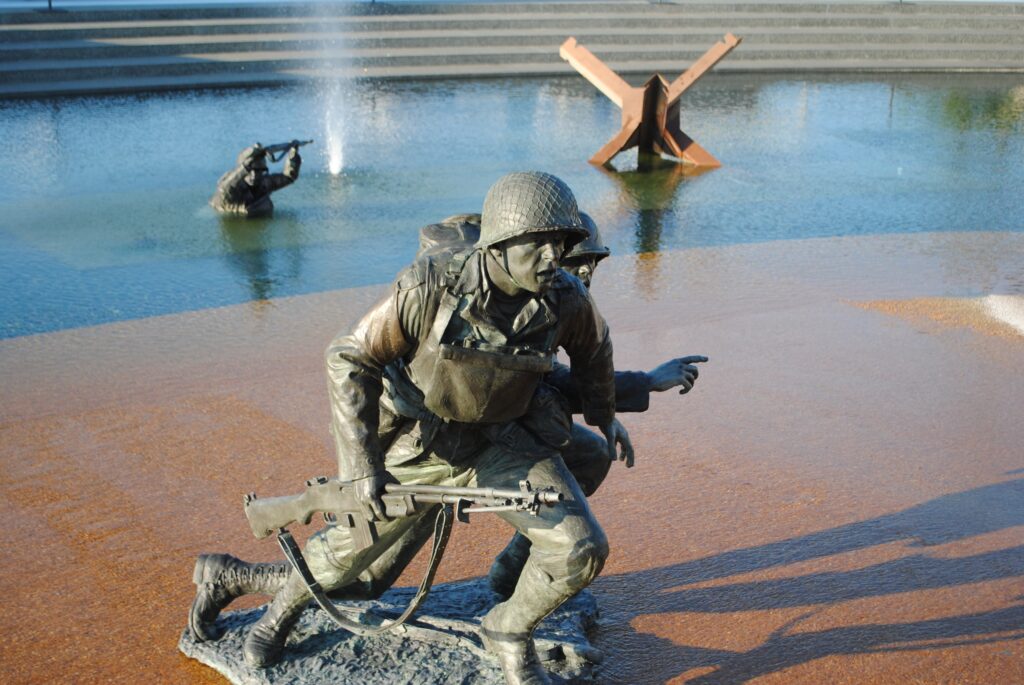
Depiction of soldiers on Omaha Beach, with a hedgehog in the background.
The soldiers were running to a cliff, a representation of the dangerous climb that Army Rangers endured under heavy fire at Pointe du Hoc. Almost as if they were melded into the cliff face, solders can be seen struggling to climb the cliff, helping each other up to the top.
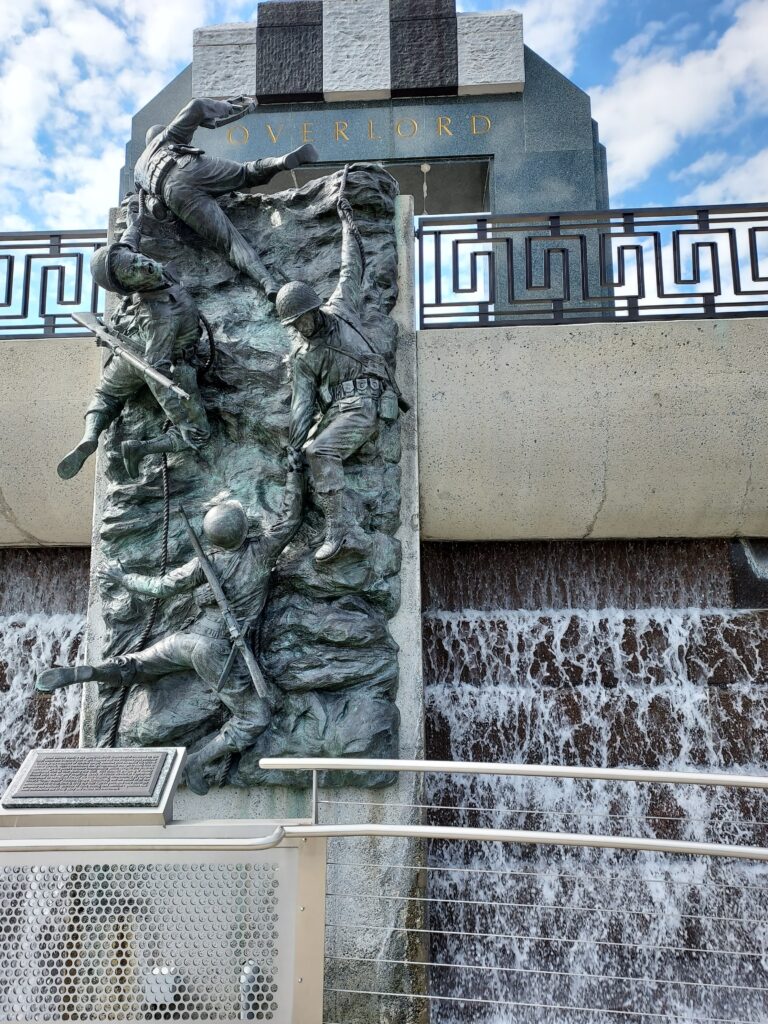
Sculpture honoring the Rangers at Pointe du Hoc.
On the left side of the memorial is a Grasshopper, a World War Two-era light aircraft, showing the contribution of the Army Air Corps to the invasion.
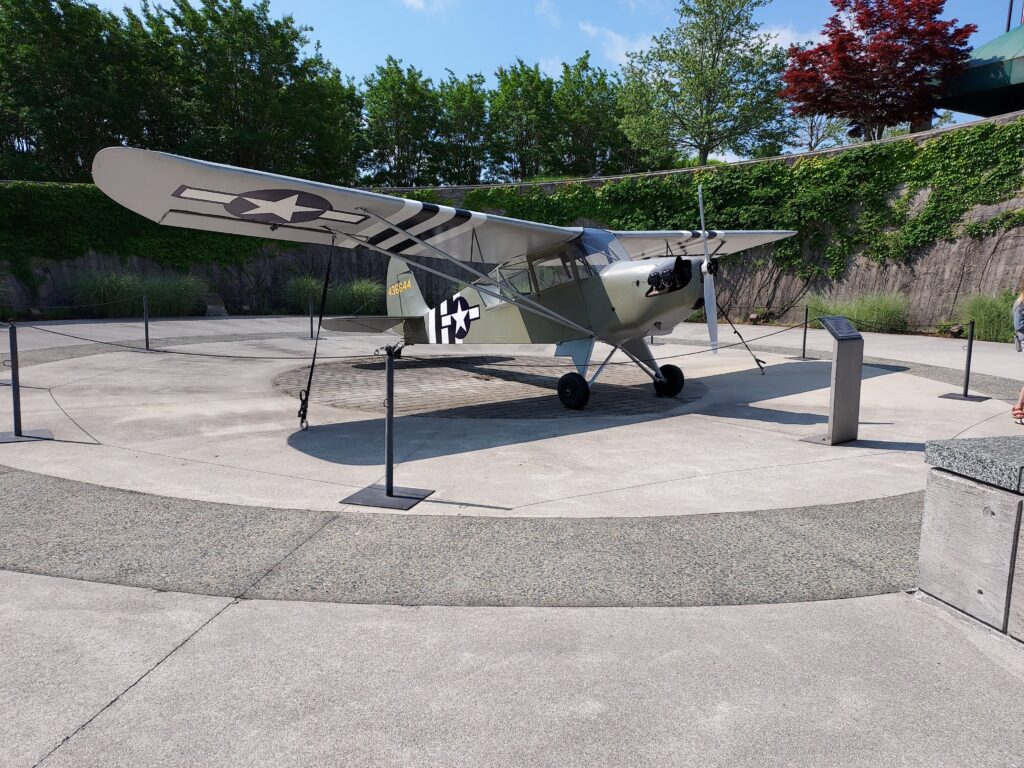
Aeronca L-3 “Grasshopper”
The right side of the memorial showcased an anchor, with plaques explaining the importance of the naval units involved in the invasion.
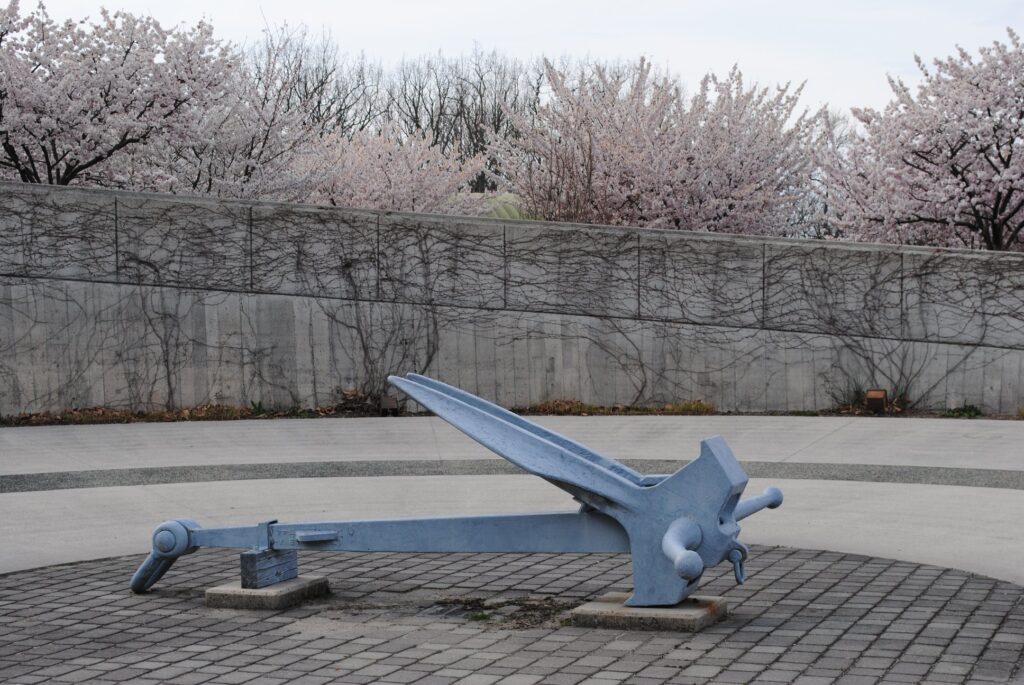
Ship’s anchor
As a soon-to-be naval officer, I enjoyed reading about the actions the US and Royal Navies took on June 6th, 1944. Ships transported the invasion troops across the English Canal, and minesweepers cleared the path for those transports. Vanguard units of destroyers and escorts guarded the invasion force from the German U-boat threat.
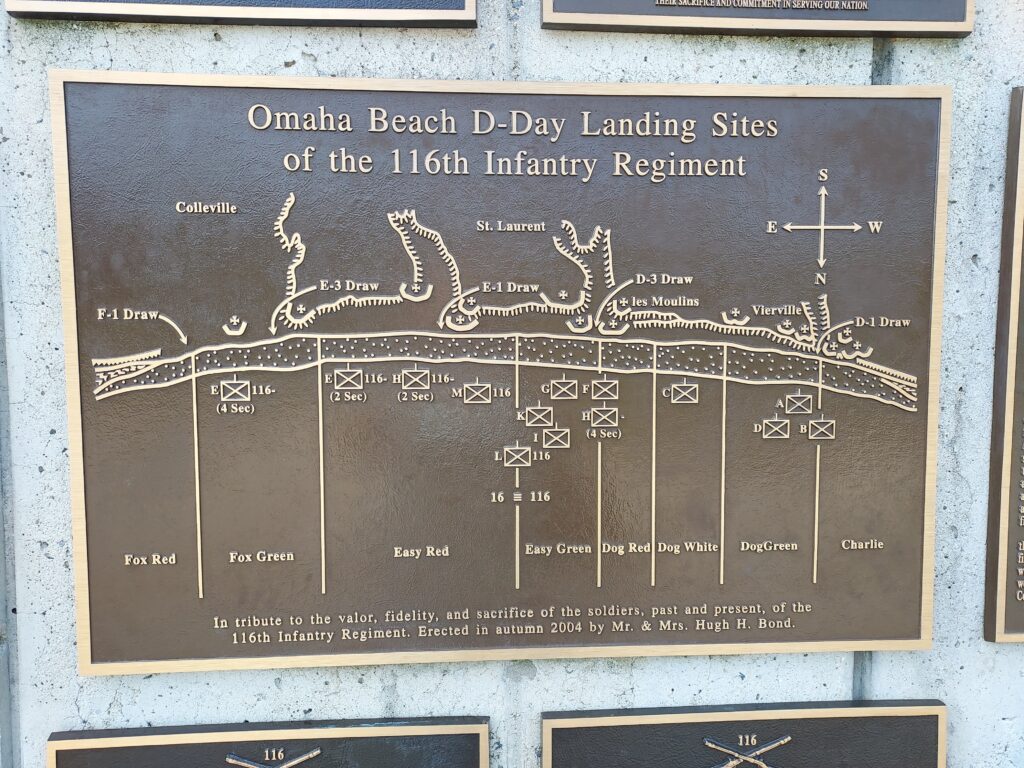
Omaha Beach map at the D-Day Memorial
Battleships, some present at Pearl Harbor, provided gunfire support before, during, and even after a foothold had been established by the Allied troops. One notable instance of naval support that stood out involved the battleship USS Texas. As defending German units moved inland and out of range of her guns, the battleship flooded her fuel tanks on one side of the ship, raising the elevation of her guns and extending the naval bombardment of the enemy. These extraordinary actions will live with me as I enter my career in the US Navy.
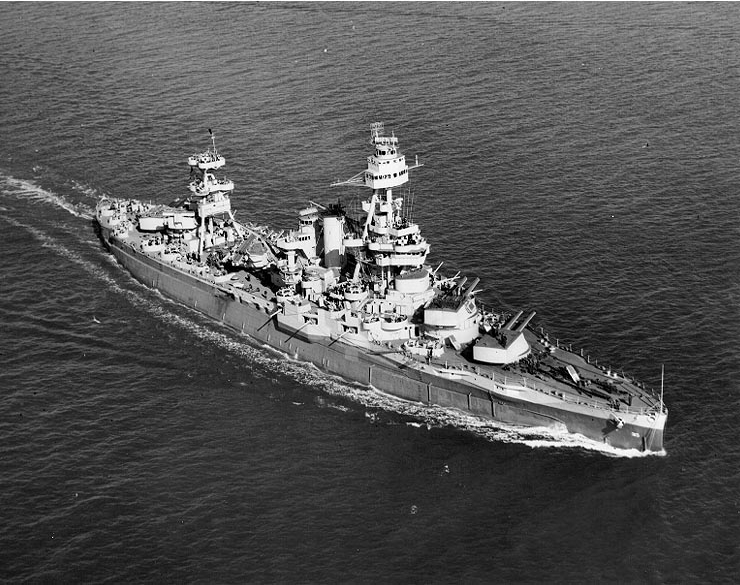
USS Texas during World War II
The service started off with an invocation and a prayer. Governor Glenn Youngkin gave a speech commemorating the sacrifices of the soldiers that stormed the beaches of Normandy on June 6th, 1944. He commemorated the Bedford Boys, a group of young men from the local area of Bedford who perished during the invasion. The town of Bedford lost 19 men in the D-Day invasion, more per capita than any town in the United States.
I greatly enjoyed my experience at the National D-Day Memorial, and I am grateful to the Marshall Foundation for the opportunity to attend during the anniversary of the Invasion of Normandy.
Michael Dale is a Virginia Military Institute cadet serving as a John A. Adams ’71 Center for Military History & Strategic Analysis intern at the George C. Marshall Foundation this summer. He will commission into the Navy after graduation next year.
